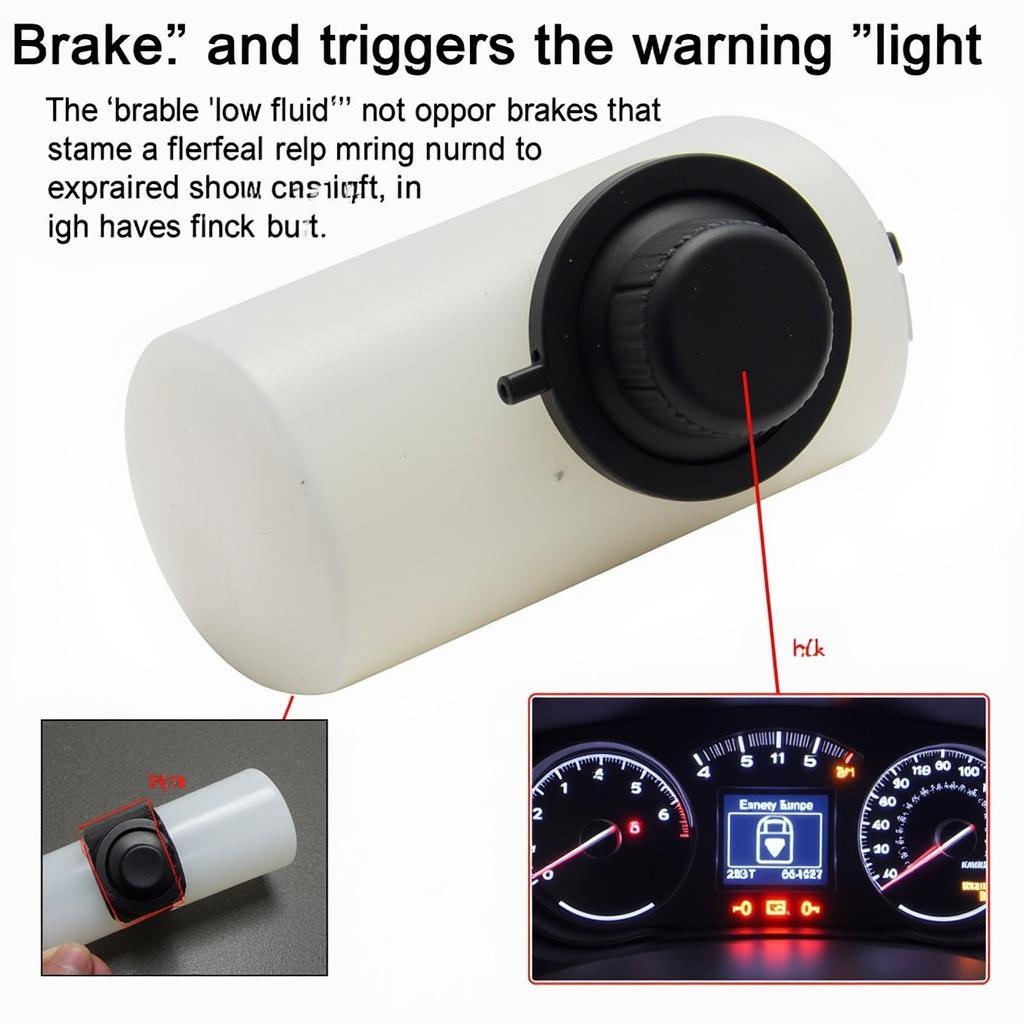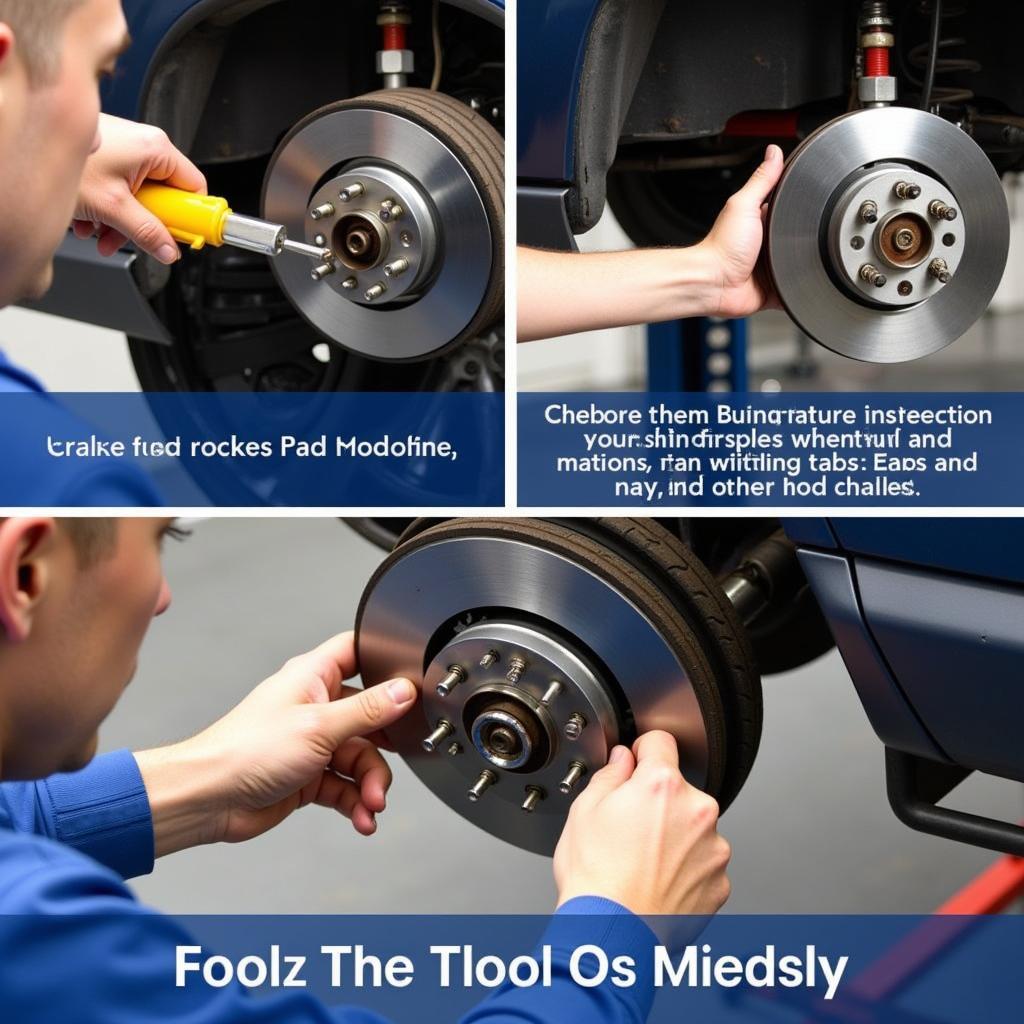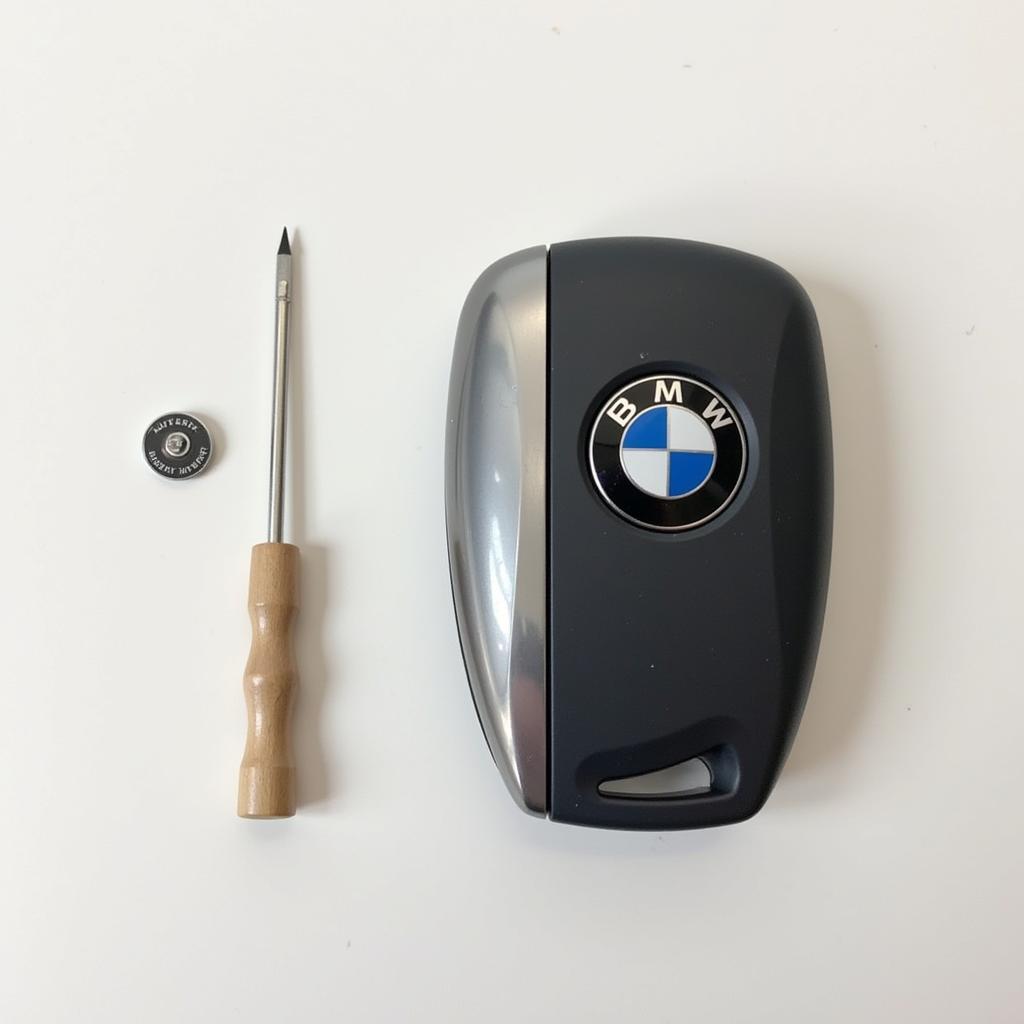The red brake warning light on your dashboard is a critical safety indicator. Understanding what a red brake warning light diagram represents can help you diagnose and address brake issues promptly. This light signals a potential problem with your braking system, requiring immediate attention. Ignoring it can lead to dangerous driving conditions and costly repairs. Let’s delve into the intricacies of this crucial warning system.
Is your brake warning light illuminated? Don’t panic! This article provides a comprehensive guide to understanding the red brake warning light, its potential causes, and solutions. We’ll explore the different components related to this warning light, including the brake fluid level sensor, parking brake switch, and ABS system. You’ll learn how to interpret the red brake warning light diagram and take the necessary steps to ensure your vehicle’s safety. If you’re experiencing a centre brake light warning on your Audi TT, you might find this resource helpful: audi tt centre brake light warning.
Decoding the Red Brake Warning Light
The red brake warning light is part of your vehicle’s onboard diagnostic system. It’s designed to alert you to potential problems within the braking system. While the light itself doesn’t provide a specific diagnosis, it indicates a need for further investigation.
Common Causes of a Red Brake Warning Light
Several issues can trigger the red brake warning light. Low brake fluid is a common culprit. A leak in the brake lines or worn brake pads can cause the fluid level to drop, activating the warning light. Another possibility is a faulty parking brake switch. If the switch malfunctions, it can send a false signal, illuminating the warning light even when the parking brake is disengaged. Issues with the Anti-lock Braking System (ABS) can also trigger the warning light.
 Red Brake Warning Light Diagram – Low Brake Fluid
Red Brake Warning Light Diagram – Low Brake Fluid
Troubleshooting the Warning Light
Start by checking your brake fluid level. If it’s low, top it off and inspect for leaks. If the fluid level continues to drop, you likely have a leak in the brake lines. This requires immediate professional attention. If the brake fluid level is adequate, the next step is to check the parking brake switch. Try engaging and disengaging the parking brake several times. If the light remains on, the switch may be faulty. You may also need to have a mechanic inspect your ABS system for any potential problems. Remember, a functioning brake system is crucial for your safety. Don’t hesitate to seek professional help if you’re unsure about anything. You can reset your Discovery 4 brake pad warning light if you’re familiar with the process: discovery 4 brake pad warning light reset.
Understanding the Brake System Diagram
The brake system diagram provides a visual representation of the various components and their connections. It helps to understand how these parts work together to ensure safe and efficient braking.
Key Components of the Brake System
The brake system comprises several key components, including the master cylinder, brake lines, calipers, and brake pads or shoes. The master cylinder is responsible for generating hydraulic pressure that activates the brakes. The brake lines transmit this pressure to the calipers, which squeeze the brake pads or shoes against the rotors or drums, slowing or stopping the vehicle.
The Role of the ABS System
The Anti-lock Braking System (ABS) is a safety feature that prevents wheel lockup during hard braking. This allows the driver to maintain steering control and avoid skidding. The ABS system uses sensors to monitor wheel speed and adjusts brake pressure accordingly. If a wheel starts to lock up, the ABS system reduces brake pressure to that wheel, allowing it to regain traction. Sometimes, the issue can be traced back to a specific component like a brake warning switch: 82 c10 brake warning switch.
“A properly functioning brake system is paramount for vehicle safety,” says automotive expert, Michael Davies. “Understanding the red brake warning light and its associated diagram is essential for every driver.”
Importance of Timely Diagnosis
Ignoring the red brake warning light can lead to serious consequences. A malfunctioning brake system can compromise your ability to stop quickly and safely, increasing the risk of accidents. Furthermore, delaying repairs can exacerbate the problem and lead to more extensive and costly damage. Regular brake inspections and prompt attention to warning lights are crucial for maintaining vehicle safety.
Prevention and Maintenance
Regular brake maintenance is essential for preventing issues and ensuring optimal performance. This includes periodic brake inspections, fluid flushes, and replacement of worn components like brake pads and rotors. Following the manufacturer’s recommended maintenance schedule can help prevent costly repairs and ensure the longevity of your brake system. For instance, understanding the specifics of a brake warning light in a 2001 Ford F650 can be crucial: 2001 ford f650 electric brake warning light.
 Brake System Maintenance
Brake System Maintenance
“Preventive maintenance is key to a safe and reliable braking system,” adds Sarah Johnson, a seasoned mechanic with over 20 years of experience. “Regular checks and timely repairs can prevent minor issues from escalating into major problems.”
Conclusion
The red brake warning light diagram is a vital communication tool between your vehicle and you. Understanding its meaning and taking prompt action can prevent serious safety hazards and costly repairs. Regular maintenance and timely diagnosis are key to ensuring the optimal performance and longevity of your braking system. Addressing brake issues promptly keeps you and others safe on the road.
FAQ
-
What should I do if my red brake warning light comes on? Pull over safely and check your brake fluid level. If it’s low, top it off and seek professional help if the problem persists.
-
Can I drive with the red brake warning light on? It’s not recommended. A red brake warning light indicates a potential problem that needs immediate attention. Driving with the light on can be dangerous.
-
How often should I check my brake fluid? Check your brake fluid level at least once a month and before any long trips.
-
What are the signs of a brake fluid leak? Look for puddles of fluid under your vehicle, a spongy brake pedal, or a drop in brake fluid level.
-
How often should I have my brakes inspected? Follow the manufacturer’s recommended maintenance schedule for brake inspections, typically every 12,000 to 15,000 miles. Have them inspected sooner if you notice any issues. This also applies to older models, like a 99 Grand Cherokee: 99 grand cherokee brake warning light.
-
How much does it cost to fix a brake problem? The cost varies depending on the issue. A simple brake pad replacement can be relatively inexpensive, while more complex repairs can be significantly more costly.
-
What is the difference between the red and yellow brake warning lights? The red brake warning light indicates a serious problem that requires immediate attention, while the yellow brake warning light (ABS light) usually signals a problem with the anti-lock braking system.

